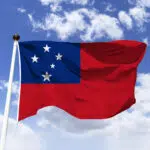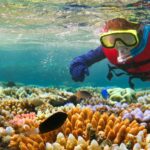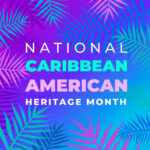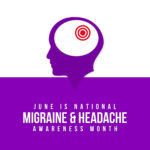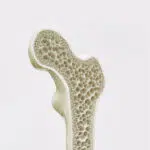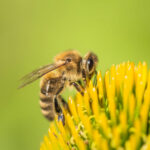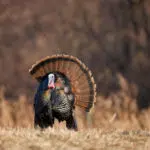World Reef Awareness Day is on June 1 and helps to create awareness among various business communities and the general public about the fragile biological system of our oceans’ coral reefs. This day unites people belonging to different backgrounds including environmentalists and social activists to come up with various ideas and techniques to protect the ecosystems of our reefs from deteriorating.
History of World Reef Awareness Day
The oldest corals appeared about 500 million years ago or even earlier. Researchers suggest that they began as plain, solitary organisms and, with time and constant environmental changes, transformed into the beautiful coral reefs that exist today.
During an ice age around 440 million years ago, sea temperatures dropped at an exponential rate and a large number of corals began diminishing from the ocean. This is called the Ordovician-Silurian Extinction Event. Around 410 million years ago, in the Devonian period, corals began to appear again. During the end of this period, stony corals started growing, which were a rare form of reef back then. Then, around 350 million years ago, corals disappeared again due to unstable sea levels.
100 million years later, corals appeared once again only to be wiped out once more by the Permian-Triassic Extinction 250 million years ago, where over 90% of sea creatures were affected. Reduced oxygen levels and increased carbon dioxide in the sea caused this tragic extinction event.
After disappearing and reappearing for another few million years, coral reefs finally reappeared 46 million years ago and disappeared for the last time during the mid-Eocene era. 20 million years later, they finally made a comeback in the form of the Great Barrier Reef in Australia, which was found by British explorer Captain James Cook in 1770.
Lately, some of the most beneficial reefs have been diminishing because of coral blanching, rising ocean temperatures, and toxic pollution. Moreover, the use of harmful sunscreens and increased tourism are also considered threats to the well-being of the coral reefs.
World Reef Awareness Day timeline
British explorer Captain James Cook discovers the Great Barrier Reef when his ship accidentally runs into it.
Studies of the Great Barrier Reef Expedition provide great insights into the reef ecosystem.
The first mass coral bleaching events are noticed as a result of high levels of ocean temperatures.
Due to the El Niño weather pattern and global warming, one-third of the total coral on the Great Barrier Reef is destroyed.
World Reef Awareness Day FAQs
Why are coral reefs in danger?
Coral reefs are slowly diminishing due to harmful activities like coral mining, overfishing, and warm temperatures that lead to coral bleaching.
What happens if all coral reefs die?
Over 25% of sea life that rely upon coral reefs may lose their habitat. Coral reefs are a source of food and shelter for the survival of such marine species.
Is the Great Barrier Reef dying?
Yes, Australia’s Great Barrier Reef has lost more than half of its corals since 1995 due to coral bleaching. One of the main reasons behind coral bleaching in the Great Barrier Reef is rising ocean temperatures and excessive UV radiation.
How to Observe World Reef Awareness Day
Do a beach cleanup
Organize a beach cleanup up with your family and friends at your local beach. Ask a professional waste hauler to get rid of the trash that can harm the marine environment including coral reefs.
Become a virtual diver
Become a virtual reef diver by joining a virtual underwater fuel trip. These virtual tours give you the feeling as if you are exploring coral reefs underwater. You can easily search for these virtual tours online on various streaming platforms, including Amazon.
Make a DIY sunscreen
Try making your own reef-friendly sunblock this World Reef Awareness Day. Regular sunscreen may contain ingredients that are harmful to our skin and marine life as well. Simply mix four tablespoons each of coconut oil, olive oil, and beeswax in a double boiler. Mix in 18 cup of non-nano formulation of zinc oxide. Let the mixture cool off and store it in an air-tight jar until used.
5 Facts About The Great Barrier Reef That Will Blow Your Mind
It is way bigger than you think
It is home to over 1,500 different sea creatures.
It’s Australia's top tourist spot
The Great Barrier Reef is visited by more than 1,000,000 divers annually.
It’s among Earth’s natural wonders
The Great Barrier Reef is among the seven natural wonders of the world.
It is a home for endangered species
The Great Barrier Reef is visited by rare sea species like the humpback whale, loggerhead, and green sea turtles.
It has its own volunteering program
Volunteers can learn reef diving and interact with reef experts.
Why We Love World Reef Awareness Day
Reefs provide food and shelter
Over a billion living beings depend on sea coral for food, including us humans. And this day motivates us to discover new ways of how to protect our reefs from getting extinct.
Reefs provide crystal clear water
Coral reefs never grow in muddy water! Sea corals consume particles found in the sea, thereby making the seawater crystal clear.
Reefs contribute to the modern fishing and medicine industry
A sound reef ecosystem is crucial for the well-being of fish life and, therefore, plays a vital part in the fishing industry as well. Coral reefs also have plenty of medicinal value and act as a key ingredient in many medicines to treat bacterial infections.
World Reef Awareness Day dates
| Year | Date | Day |
|---|---|---|
| 2026 | June 1 | Monday |
| 2027 | June 1 | Tuesday |
| 2028 | June 1 | Thursday |
| 2029 | June 1 | Friday |
| 2030 | June 1 | Saturday |
































